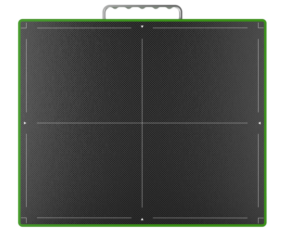Imaging in veterinary medicine presents a special set of problems that you won’t find medical practice. The anatomical differences between patients that come to your vet’s practice require that you think of their specific needs to maximize the probability of a successful diagnosis and treatment.
To achieve diagnostic and treatment efficacy, veterinary imaging facilities need to have flexible infrastructure such as portable and compact imaging equipment, to say the least. Since veterinary patients have different needs than those for human patients, setting up a veterinary medical imaging facility presents unique challenges that we will now try to resolve.
This blog will discuss considerations that you should keep in mind when choosing veterinary X-ray equipment. You should use this as a blueprint for when you’re choosing and buying X-ray equipment/software for your practice.
 Financial Considerations
Financial Considerations
Digital equipment is slightly more expensive than conventional X-ray equipment. The choice between a new X-ray unit or a retrofit really comes down to your preferences, but nothing’s to say that new equipment is better than retrofit equipment. At ExamVue, for example, offers our patented 14” x 17” and 17” x 17” wireless or tethered DR flat panels for as low as $40,000.
In the context of your clinic’s financial management, you should think of the funds available to you and how much you’re willing to spend on your X-ray equipment. We realize that raising funds for new equipment isn’t easy but, then again, there are quite a few cost-effective imaging solutions out there. Compared to conventional X-ray machinery, DR equipment is much faster and produces better—so you really get your money’s worth with a retrofit.
Placement and Portability of Equipment
There’s a lot more versatility across patient anatomies in veterinary practices than in medical practices. The equipment used to screen a terrier can’t really be used to also get diagnostic imaging for a horse because of the obvious differences in sizes and biology. Wireless DR Panels are obvious choices for your imaging needs since these can be stored in bucky trays and carried around to image your patients from different angles.
Additionally, you can try out the DynaVue by ExamVue, an imaging solution specifically designed for veterinary practices. DynaVue is a 2-in-1 imaging solution equipped with a DR panel and allows for fluoroscopy to reduce space requirements and produce high quality imagery.
One other recent innovation of ExamVue’s is our DirectVet digital X-ray solution for veterinarians. DirectVet is DICOM 3.0 compatible, can be set up in short periods of time to produce high quality medical images for effective diagnosis.
 Supporting Software Requirements
Supporting Software Requirements
With any vendor you must also look for how versatile their imaging acquisition software is and how easy is it to learn or use. Many image acquisition solutions are too functionally limited to be effective for imaging purposes and sometimes PACS aren’t scalable or incompatible with your existing hardware. Most of our imaging systems are supported by our image acquisition software and PACS, which offer scalability and compatibility with DICOM systems.
Technical Support
One final consideration is whether your vendor offers technical support for their solutions. DR panels are sensitive equipment which need to be cared for and maintained by experts. Your vendors should offer timely tech support and expertise to resolve your concerns before things get out of hand.
At ExamVue, we offer veterinary digital x-ray solutions including DR flat panel detectors, and our patented DynaVue and DirectVet systems. We also offer veterinary x ray imaging software and PACS solutions to improve imaging quality throughout your veterinary practice. Get in touch with us today for more information on our products.


